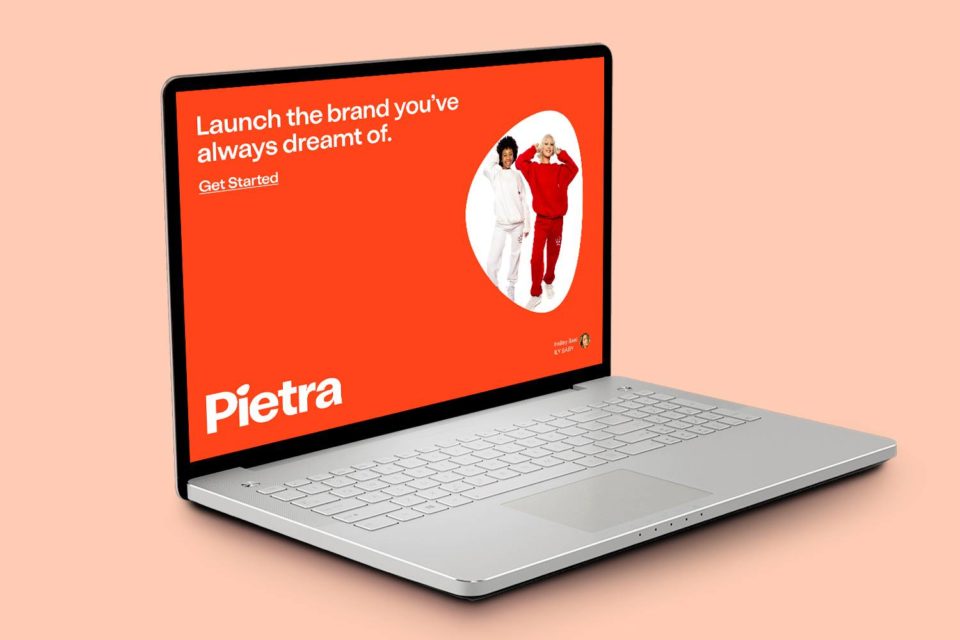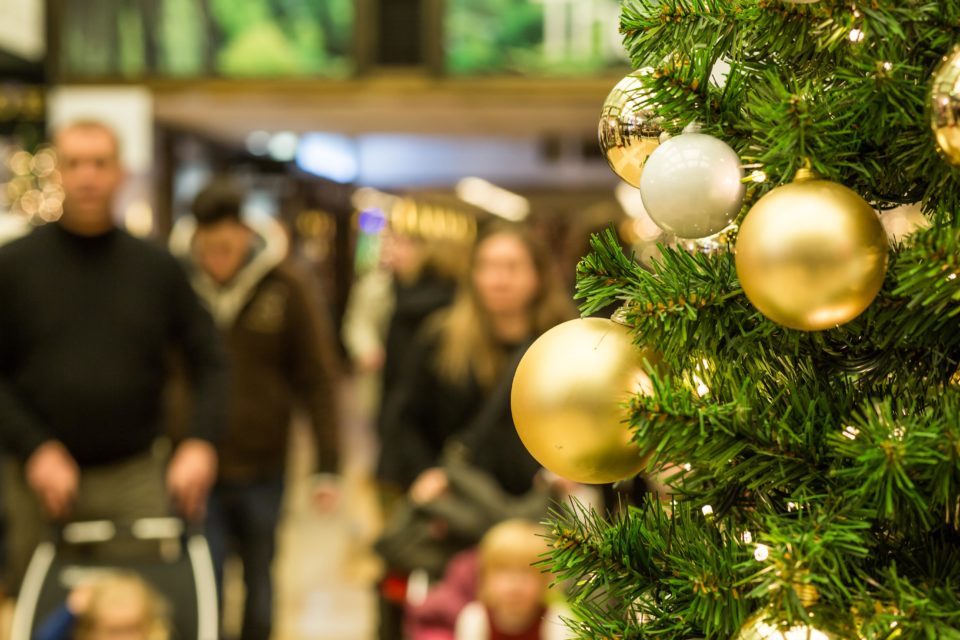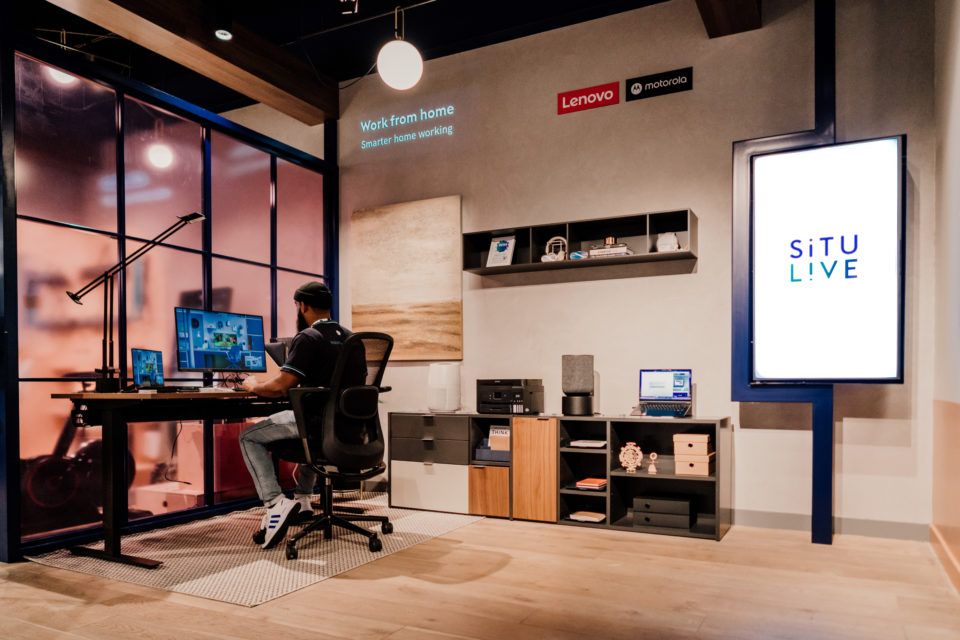How did The Bike Shed use community to get on the road to success?
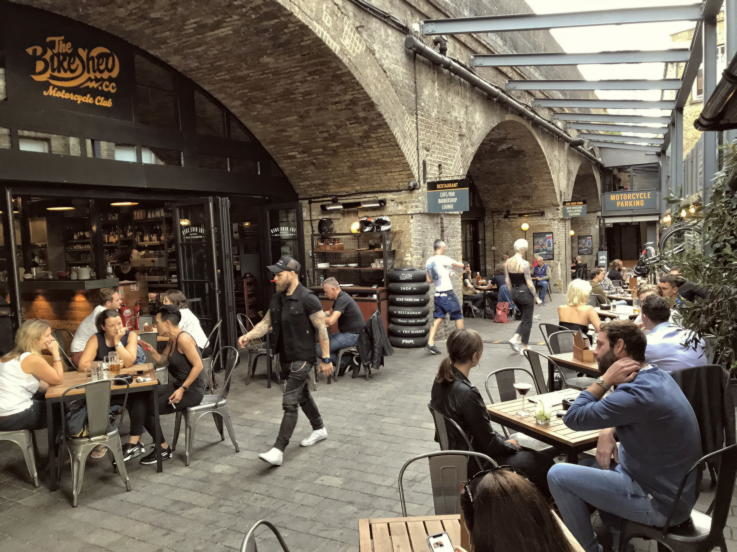
Can we just say that we love The Bike Shed? It is one of the best experience and community-driven spaces we’ve come across. And it wraps all of this around a real-life motorcycle club. The best bit though is that people who don’t have a motorcycle, people who aren’t even bike fans, want to spend time in it as well.
That’s the kind of natural atmosphere that is hard to find. Combining a restaurant, retail, hang-out space, gallery, motorcycle parking, events and more, The Bike Shed is wonderfully welcoming, completely unpretentious and totally in service of its target market. It’s the latter point that has given rise to its authentic growth and organic strategy. It’s community without all the ‘strategy’ of community.
Founder and CEO Anthony ‘Dutch’ van Someren takes us through the challenges of getting a venture like The Bike Shed off the ground, how it feeds the community, and how it’s unusual approach to business may be the reason for its success:
How do you balance making everyone feel welcome in the space – both the bike fans and the non-bike fans?
Ultimately what makes people comfortable is other people and how they’re treated. What we wanted was to create a club-like experience for everyone who turned up. One of the things that I try and explain to people is that The Bike Shed motorcycle club is a motorcycle club but you don’t need a motorcycle and you don’t need to join the club. You can still experience motorcycle culture and you can still experience the same level of service and sense of community as if you were part of the club. I think that’s a really important part of it.
We never set out to open a restaurant. We set out to open a destination and everything that we do within that is all about how we serve the community. Really good food and drink is one of those things. But it was that way round. I think that one of the keys to the success of most of the things we do is you look at it from a consumer’s point of view and say how do we look after people; not how do we make money or how do we create a business out of nothing.
The cliché in business is the why – find the why – but it’s a very true cliché. Why would people come through our door? To have an experience and have a really good time and that experience might include food or retail or they might just have a coffee and look at some bikes, but they’re definitely going to have an experience and something to talk about.
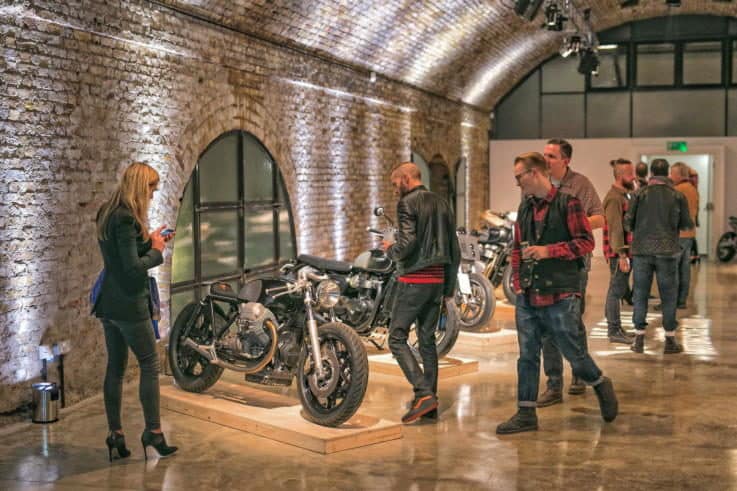
How would you describe your typical customer?
We’re always interested in becoming a global destination brand. We started as a global website and then we became a show that although it was based in London, and we did it in Paris for a while, was an international show. So, when we opened the space we felt like we had a global audience.
We do a lot of online publishing and we can reach up to a million people a week from all over the world. I’m always interested to see how many tourists seek us out and it’s a lot. We get people from literally all over the world. They’re usually coming to London anyway and The Bike Shed is on their list of places they must visit, even if they’re not petrol heads or bike riders.
We also serve the local community because we act like a kind of free Soho House to the laptop brigade who haven’t got a proper office. So there’s a kind of a We-Work crowd in the daytime and also a lot of motorcycle journalists, PR companies and people who work in the bike industry.
Then there’s a London tourist community. I think Shoreditch is the new Camden. We are a place they find on Google, we’re in the top three percent of restaurants on TripAdvisor. We get a lot of really good recommendations for our breakfasts and our Sunday lunches. It’s about lots of different reasons to come. Some people come because they really like our food. Other people come because we have free Wi-Fi and other people come because we have motorcycles.
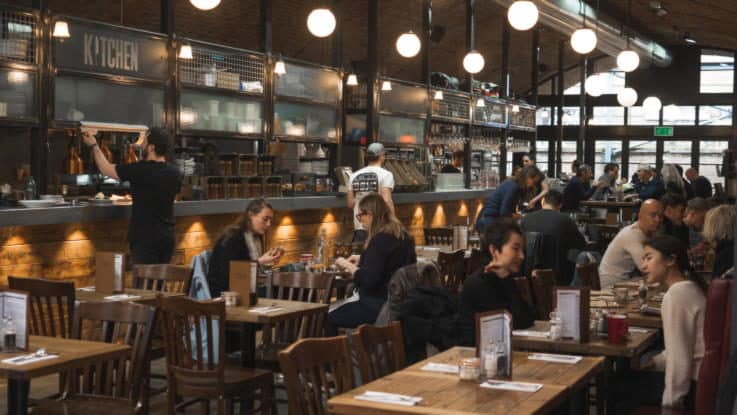
Which parts of the space are profitable? Is one thing a loss leader for another?
It works as a package but there are definitely things that don’t make money. We use one of our arches as a restaurant and then another arch is retail with a bit of lounge space. Arch three is just a big gathering place so that’s not making any money. Then most of the time we let people park their motorcycles in the fourth arch, which is completely useless in terms of business. So, it depends on how you look at the space.
If you look at yield per square metre we’ve got two arches that don’t really do anything but on the other hand if they weren’t there people wouldn’t be coming into the first two arches. The bit that makes the most money is events space hire, but we try not to do too much of that. We hire out Arches 2 and 3 during weekday daytimes, but we avoid evenings and weekends. That’s very profitable but it’s not our business. It’s sort of the cherry on top but there are lots of things we do outside our four walls.
We have online retail and wholesale and they’re both in growth at the moment and we have an events business. We do a really big annual event at Tobacco Dock and it has huge turnover. We had it before we started the venue in Shoreditch and we’re doing our tenth show next year. That’s a profitable business.
We have a lot of permission to make less margin in the restaurant than another restaurant might because we’re delivering service not food. So, we purposely make less margin. Our steaks and our burgers are slightly better and slightly cheaper than the people around us because actually we’re not trying to drive ridiculous margin on them, that is not our entire story. What we really want is loyalty and more members because actually that’s really powerful marketing. That will mean more people will buy an expensive crash helmet or leather jacket that we make in collaboration with somebody which is much more profitable.
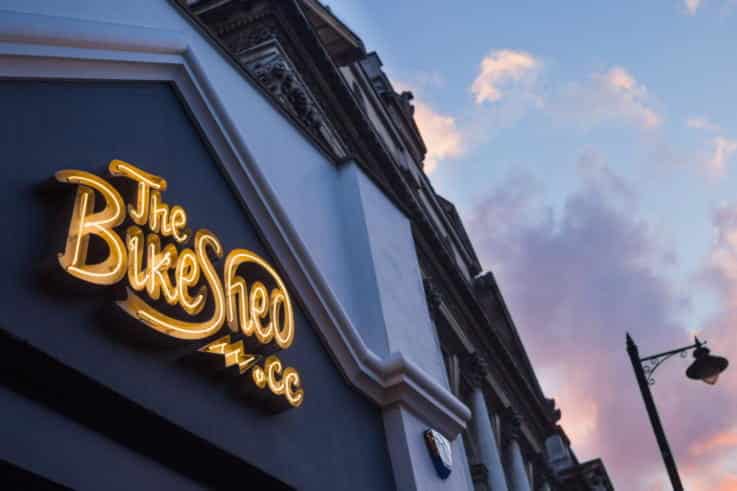
What we’re really building is a brand and the brand needs all of its channels. We have to be an authority online, as pundits, as people. We get invited to all the new motorcycle launches by the brands. We need that form of authenticity and credibility and to be an authority in the world of biking.
We’re sort of pundit journalists. We also comment on the scene and comment on other people’s events and our events. We have a YouTube channel of 28,000 people now which is not bad considering it’s only about seven months old. All those elements which you could call loss-leaders are our free marketing and it makes us a real deal. In the future you could argue that’s worth a lot as it grows.
In terms of our audience, our reach, our influence and our relationship with our community is a huge thing. We’re really IP around community and experience more than anything and everything else is an outcome of that. Those people need a destination, they need to be fed and watered when they get there, and people like to buy things. They like to wear the badge of their tribe, so that means caps and T-shirts and jeans, but it also might mean a pair of boots because they have a need for functional gear and apparel that works when they ride a bike.
We’ve got so many things, but I think that you need all of them. There are other brands out there who dip their toes in the waters of motorcycle culture, but they only do one or two things whereas we do four or five. I think it’s the completeness that makes us a community rather than just a product.
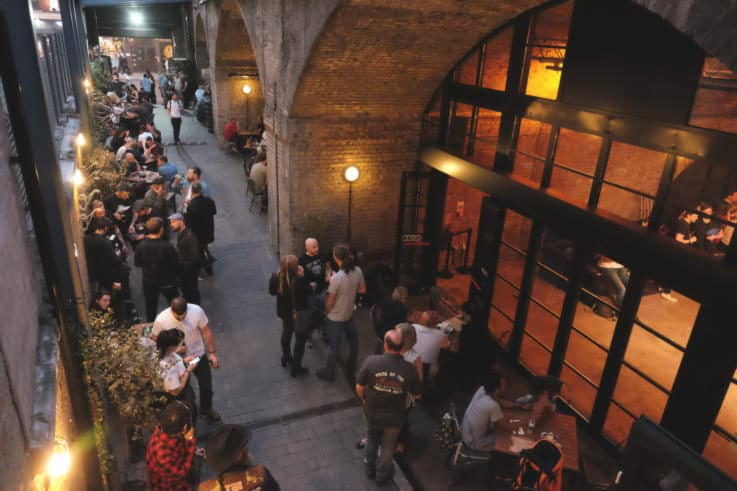
How was the strategy developed?
It happened organically. I think the best ideas fill a natural need. They go back to the why. There are two big communities. There’s one community that ride motorcycles that don’t call themselves bikers and they’re not served by the motorcycle industry. The motorcycle industry assumes everyone’s an expert and a geek and knows everything about their bike and lives for biking. They have a very 1970s view of hospitality, it’s spit and sawdust and a cold cup of tea and a melted Kit-Kat in a cafe by the road because there’s a road. But what about the other 90 percent of riders that love bikes but actually don’t have a millennial biking experience because the coffee is not good and the food’s not good and the experience isn’t good. We filled that need by creating a destination and that happened organically.
We thought what do that community need – they need good food and good coffee and somewhere to sit and good gear to buy and stuff to look at. They need art on the walls and they need a good soundtrack. They need a comfy sofa and a magazine. So, we created that. That didn’t really need a strategy. It is a strategy, but it certainly didn’t need a strategy.
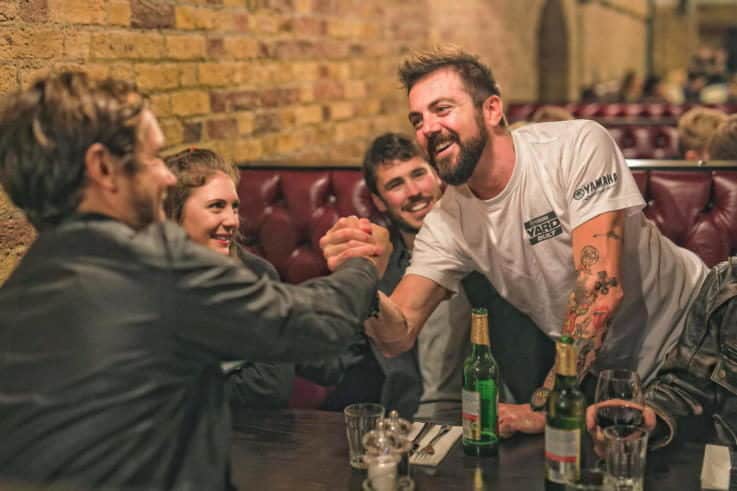
Then the other community was people who love bikes because what motorcycle riders in the industry forget is that biking has been cool since Lawrence of Arabia rode across the desert. Every big film has got a motorcycle in it with the A-lister riding it in a chase, music videos have bikes in them, Keira Knightley is still selling Chanel on a Ducati 900SS even now. Biking is cool to other people that don’t ride. So, we also want to create a destination that overlaps into that world. If you like bikes but you haven’t got one, but you think they’re cool and you recognise the Triumph or Ducati or Harley Davidson name you’d come and experience what we’ve got to offer and enjoy biking vicariously through other people.
I’ve been a brand strategist for a long time, but it really did grow organically. I started a blog and that filled a need and then I started a show and that filled a need. Now we’ve created a destination and that fills a need, and that includes retail which fills a need. In some ways I think that those of us that run the business are all our own customers and that’s a very luxurious position to be in. Usually when I’ve been a creative director or working in brands or managing content IP the real issue for me is that I’m not dealing with myself – I’m having to be a 10-year-old boy to market Ben 10 on Cartoon Network.
Finally, I am in a position where I am the target market and I can think ‘what do I like’ and ‘what do I want’ which is quite fortunate. Obviously, I can apply the brand science to that on top but that’s more to do with when I’m selling it into other people. If we want to get wholesale distribution at retail I can talk the language of brands to our potential stockists. Or if I’m talking to investors about why they should invest in the business I can explain that we are an intellectual property play, not a restaurant play, and we’re all about community and experience.
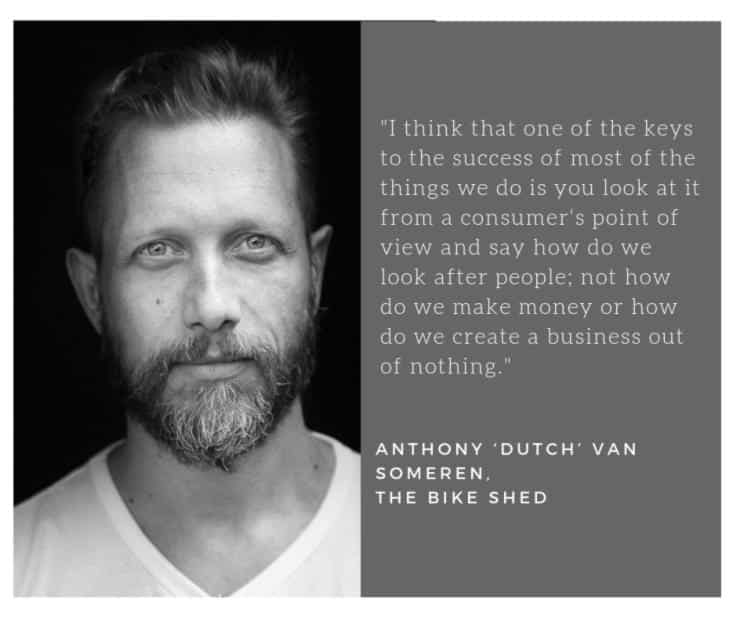
Do you think there are different pressures on you compared to a big-name brand that has a growth at all costs type mentality?
Our investors have been our partners in business for three years. I think the most important thing with investors is you do what you say you’re going to do. Don’t make loads of promises and then fail to deliver on them. We’ve certainly not had a smooth ride and there have been times when we’ve had to go back and ask for more money. But there’s always been a proper justification for that. It hasn’t been ‘rescue us’, it’s that we’re doing more things than we expected, and things are bigger.
I think you win trust over time. Nobody just looks at a business plan and says ‘I’m going to back you’. Even people that look at performance or commoditised products ultimately what they’re really buying into is trust in the management. Are they doing a good job and are they working hard for you and are they managing the business as you would like? I’m very privileged in that although I have a lot of stakeholders they all trust me and my team to do what’s right.
We do have ambitious plans. My main ambition is to keep nurturing the IP so that we make a lot more money out of retail outside our four walls. But we need to make sure that we don’t damage any of our authenticity and we keep true to the brand and make sure that we’re really careful about how we do that. It’s complicated because we also need to do it in credible ways. I’ve worked for lots of businesses that were in growth and what they do is they try and identify areas where they think they can make money. They analyse the market and say, ‘oh there’s money here’. What I always go back to is as a brand do you have the authenticity to step into that place? If you’re the extreme sports channel should you be selling mobile phones? It’s not just a question of where’s the money and what do the analytics say, do you have permission?
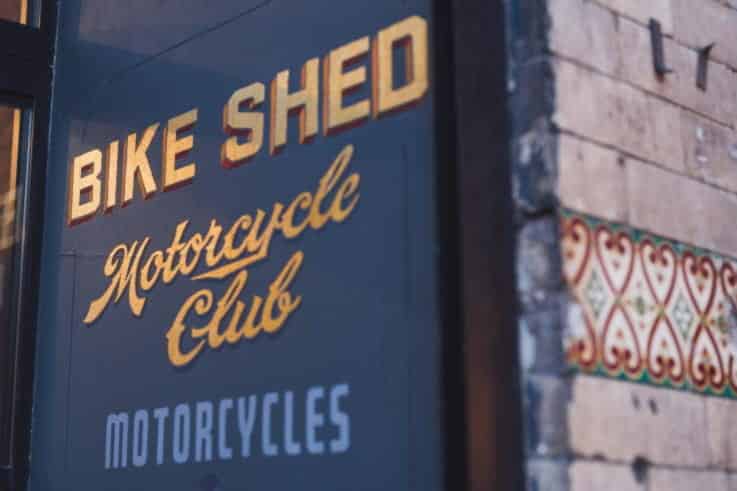
I think the main thing with investors is you need a story that makes sense to them. You can’t look at any one part of a business and say that’s my key performance indicator. You’ve got to look at each individual fragment and say what’s the indicator of success in that fragment. The indicator of success for me in our restaurant is we don’t lose money, we just about make a profit, and we’re in the top three percent of restaurants on TripAdvisor. That means a lot more.
The big challenge is if you have a complicated business and you need to tell a subtle story that isn’t just how much profit did you make this month and is based on other things that are important. How do you communicate that to investors who frankly don’t have time to read anything? However carefully you craft your communications documents they will ask questions that are answered in what you’ve just written.
Actually, I think that’s the biggest challenge – comms – because people are too busy to listen. You need to find a way to keep your investors and partners in the loop. Ideally for me they are members and visitors and they come to the club and they see the vibe and the atmosphere. They can see we’re doing well, and we share our management accounts, but actually creating good communication is the key.
Who worked on the design for the space?
No-one. It was four big empty railway arches and we got the builders in. We treated it like a shed. If you have a shed and you want to make it hospitable you put down a rug and you buy some old leather sofas and you get a nice coffee table, you put a gas fire in the corner and buy a coffee machine and now you’ve got a really nice place to sit in your shed. We treated the place like that. Obviously, we had to think about it but it was really just me and my wife and our mates going ‘shall we put that there?’ We always designed everything so that it was kind of mobile. You might notice all our furniture in the shop is on wheels. We could move out tomorrow.
There’s a sense of cheap gentlemen’s club. A lot of our lighting comes from one lighting shop and it’s very much 1920s and 30s inspired. A lot of our lights wouldn’t look out of place in a Victorian railway station. I wanted an open kitchen because I like being in a kitchen where I can look the chef in the eye and see that he looks clean and enthusiastic and I’m going to get nice food.
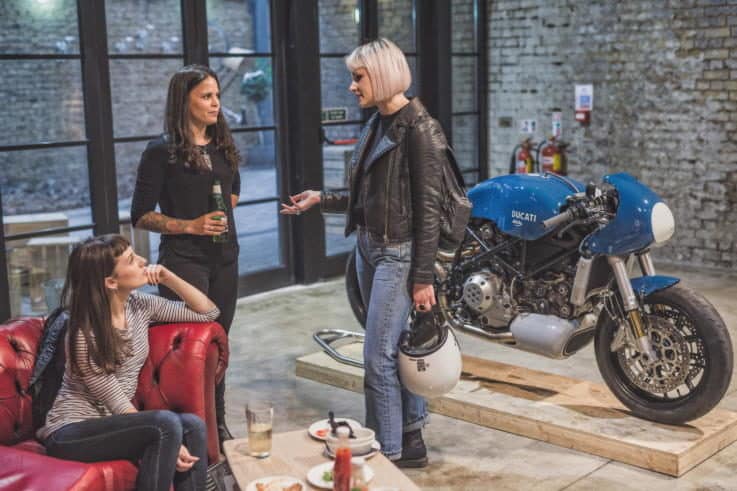
What have you learnt since opening the space? If you were to open it again is there anything you’d do differently?
I think there’s a few things I would definitely do differently. Whether or not I could have done them I don’t know. I’d have raised more money. It’s frustrating and you feel pretty bad if you go back to your investors and ask for more money which I had to do. We did get a bigger space than we intended, and we did do more with it and we certainly delivered on making it work but I would have definitely raised more money in the first place. But the truth is I don’t think we could have.
I don’t think people would have given us more money for the venture we had in mind. In some ways doing it iteratively probably worked and if I’d gone in there asking for all the money I needed in the end I probably wouldn’t have got it. Cashflow is a really big issue in retail and restaurant. We had a lot of cashflow problems and you definitely need to be sitting on a good 20 percent of your turnover to know that you’re okay in that respect. You can get surprises from suppliers or people that are supposed to pay you money and then they don’t pay you on time. Cashflow is absolutely essential.
I think the other thing that I would have done a lot earlier is I probably would have invested more in our retail because retail is a lot more profitable than the restaurant. But you get caught up in what’s in front of you and if you go to work every day and you walk into a restaurant you become absolutely fixated by that level of service and food and quality and it’s such a time thief. It robs you of doing other things. When your relationship with your consumers is about experience and your restaurant is the first line of experience you become really obsessed by it.
The thing about the Bikeshed and the team is a lot of them were my friends. We did our annual shows and the show was run by volunteers and the volunteers were TV producers and cameramen and CEOs of businesses. They were there helping us do our show and move bikes about and take tickets on the door. It was a volunteer force.
When I decided to go full time some of those volunteers said ‘I want a change of life. I want to come and work for you, I’m going to give up my job’. Gareth who runs our retail was a West End stage actor. When we did our shows at Tobacco Dock he did the retail. He was the guy that volunteered to work in the shop and he was brilliant at selling stuff. He’s a biker who loves gear and he likes clothes and he likes stuff and he has got his head down and learnt the business of retail. We sent him to one of our friendly retail brands and he went there for a few weeks and learnt the business. Now that probably wasn’t a smart business move because I could have just employed somebody who knew what they were doing.
But on the other hand, you can’t pay for hard work and loyalty and attitude whereas you can learn anything. I felt I knew enough about the broad-brush strokes of retail, product development and marketing for us to just get on with it. We did that with a few positions. Quite a lot of our team were absolute amateurs. I’d never run a restaurant and I hadn’t run a shop and I hadn’t run an event space business. I was a marketing director and a brand strategist and VP of programming for broadcasting channels. I had absolutely no credibility in running a club space with events, restaurant, retail.
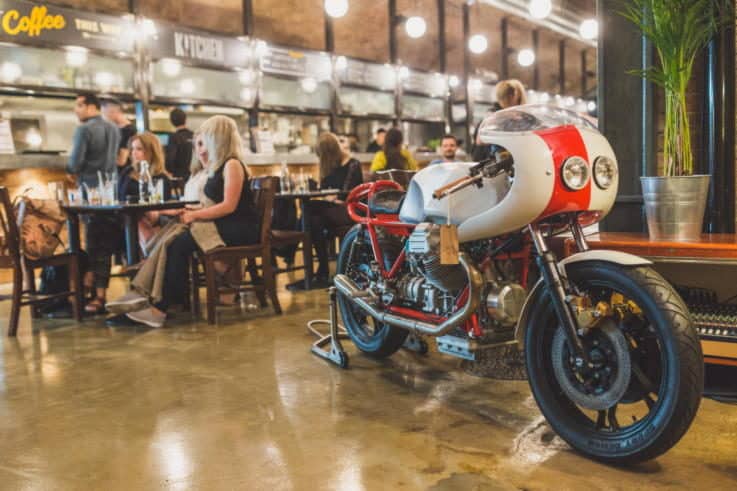
Did it feel like a baptism of fire at particular points?
Yes often. It was really hard. We were very very lucky in that the community already supported us. We opened a destination which already had a community and not many people get to do that. Normally you open a restaurant, or a shop and you hope people turn up. It’s more like having a really successful online shop and then putting an actual physical shop into Oxford Street.
The minute we opened our doors we were busy. We weren’t nearly as busy as we were going to be and a lot of the people that came were our most loyal followers and friends who actually didn’t spend much money. But we had an atmosphere and a crowd. Whilst it was all a bit new and clinical and didn’t have enough warmth and depth to everything, at least straightaway it felt like a place. It was so much better than anything out there that we had a crowd.
We were even more surprised to have a crowd through winter because my big worry was that we would be a summer time destination for people who ride bikes. We didn’t know that we would be hugely appealing to non-bikers. We wanted to be because our shows are designed to be inclusive. When we did our marketing for our shows we didn’t market to the bike community because we knew they were coming.
We marketed to people that like tattoos and barber shops and photography and design and art and music because we knew that those were categories that sat on the fringes of motorcycle culture and that those people might come to our show because it’s an experience, but we didn’t know that would work as a destination.
What proportion of visitors become members?
Conversion wise it must be tiny. Our footfall is over 2000 people a week, we’ve got 780 members. Our business model isn’t based on membership. That’s almost our marketing core. I think really the membership creates our super community.
Our gold members pay £250 pounds a year. I think our turnover from membership revenues is about £70,000 a year. It’s not a huge amount of money but our discounts to members are about £60,000 a year. It’s obviously discounts off topline not bottom, but we give up a lot of revenue for the revenue we get. So we’re not really doing that purely as a business model, we’re doing it more for marketing. It is important to me that we have a large membership but not for financial reasons.
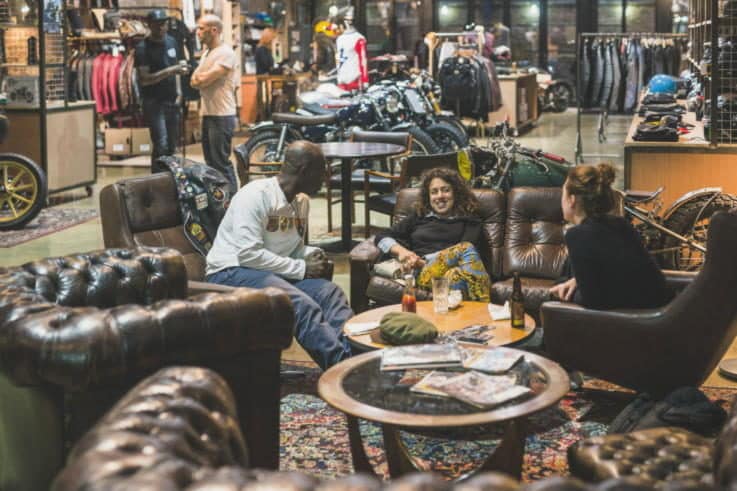
Why do people join? Is it primarily for those discounts and perks or do they love what you do?
When we first opened all the members were our friends and people who wanted to support the business. It was more like Kickstarter start-up money. We signed up about 250 members at £250 each and that was very helpful. It was a big chunk of money on top of the investment that helped us keep the business going. That was a loyalty phase.
The second phase was when we decided to make lots of discounts. We really sold the membership quite hard online as you get 20 percent of your food in the weekday and you get 10 percent off Bike Shed gear and apparel on the weekends or 20 percent if it’s branded and we made it like a discount loyalty card. It worked but it constantly meant people were questioning the value of it. They’d buy a membership card because they were buying a Belstaff jacket, a pair of boots and a helmet and the 20 percent off was about the same as the membership.
Then I realised we’d commoditised our community and that wasn’t the right way to sell it. So, we changed our pitch. We hired a Membership Manager to just focus on memberships and we made it about experiences. We started to do members-only events and we started to host our club nights. We always used to call Thursday night club night, but we started to have people actually hosting them and welcoming people. We created a membership committee and we allowed them to do Bike Shed stuff in our name without us organising it.
We started doing an event called the Captains Table where members could have dinner with Charlie Boorman or Fast Freddie Spencer or Jamie Whitham and there was no extra charge. It was just normal menu pricing. When we started doing that the membership started to grow again and we went from having about 400-500 members to having nearly 800 members in a year. Those people are joining for community and for the camaraderie and for the experience of being in a real club that does things.
Is that going to be a big part of the business going forward?
I think it will be a big part of our core brand truth, that we are really a motorcycle club. We’re not a motorcycle club by name. It’s not a clever brand thing. If you come here as a visitor, you are going to a bike club and actually I think that’s quite powerful.
It will always be a really important part of what we do, and all of our investors are members. The others value that because if they know that Charlie Boorman is an investor member and Tom Hardy is an investor member and Nick Mason of Pink Floyd is an investor member then they just joined a club that has those people in it. I think that has a kind of currency on its own.
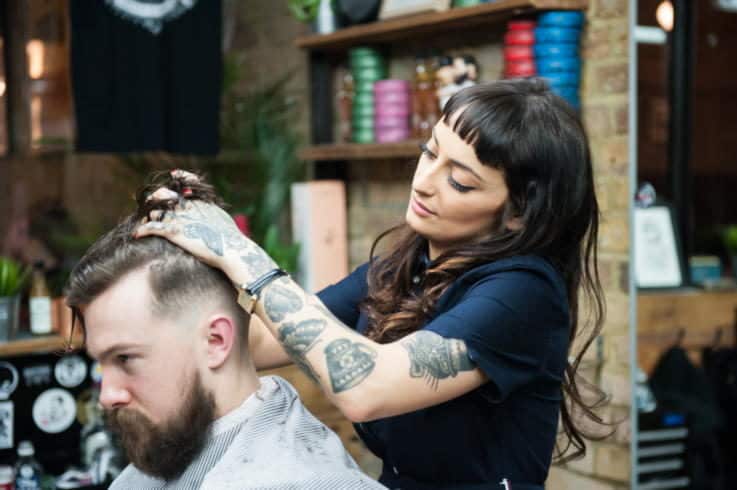
Do you think it’s possible for traditional retailers to create their own sense of community?
I think it depends on the brand, you’ve got to look at the details. The problem is we live in a world where we are a meritocracy capitalist society and people are expected to make money. Also, we live in this bubble where we’re pretty much always in growth. People look at their businesses and go ‘how do we do more and make more money’ and so they go ‘well community is important’. It is a very powerful tool. But it’s like anything if you haven’t got a route to making it there’s no point in faking it, it won’t work. You’ve got to have some truth in it, so you’ve got to say where’s our real community and can we exploit that.
People will suddenly get into events or will randomly get into music and sponsoring music events or they’ll start being big sports sponsors because what they’re looking for is loyalty to community. The reason cigarette companies used to sponsor Formula One racing was to try and have some sort of sexy association with something community based and win loyalty for their brand of cigarette. Ultimately, it’s much easier to do if you really already have it.
If you’re a denim brand you can probably find people that are real geeks and love historical vintage denim and you could probably create a community out of that. But if you’re a brand that makes perfume that would be really difficult. You can’t say here’s a good strategic marketing idea sold into you by your new PR company and that’s how they won the pitch. You’ve got to go is there any truth in it? It’s a little bit like me telling people that I’m going to make money out of window cleaning because I’ve got a lot of windows. That’s just a random idea with no truth behind it. That’s where brands get a little bit unstuck. They look at their competitors and their peers and they go ‘oh we have to do that’ but they haven’t got the seeds to grow it from.
I think the businesses that improve best in the space of communities are those that seek out the communities that already exist around them and feed them. But if you haven’t got one good luck starting one.
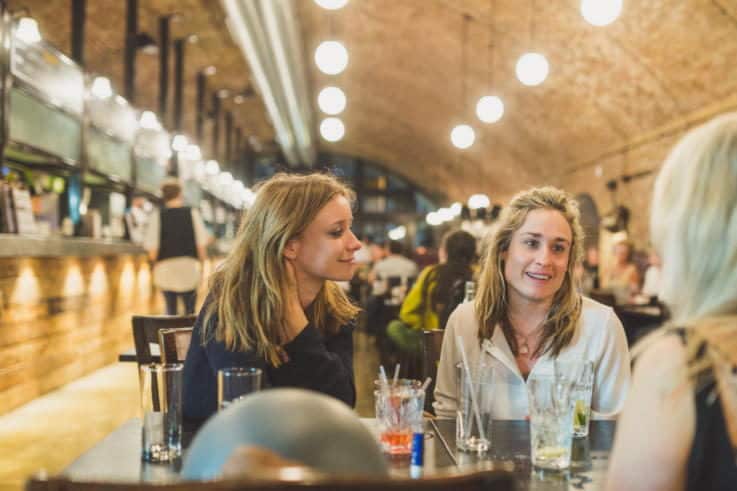
Are you able to tell me a bit more about the relationship between the space and website?
The online space in terms of retail has been a real slow goer and delivers pretty modest numbers. Possibly that’s one of the things I could have done better from the start. When we first started our online retail, we partnered up with a company who were quite an old-fashioned online retailer who specialised in motorcycle gear and apparel amongst a few other things.
I think they looked at us and thought ‘here comes a bunch of trendy media Londoners and they’re going to eat our lunch’. So they did a little bit of Zen and the Art of War and they did a very nice easy deal with us to do all our online fulfilment. But they always kept us on one website iteration down from their master page and we did really badly in SEO and we had really low sales for a really long time. After a while we got a bit fed up and last May we actually changed our partner and our web sales went up by a factor of 500 percent in one month.
We also stopped selling other people’s gear. If you went on our shop in the past, you could buy a Belstaff jacket or you could buy some trousers by Revit. We took all of that away. We only sell Bike Shed branded gear online now. But we still went up by 500 percent.
Right now, we’re in a phase of growth. We’ve just taken on a wholesale brand manager and beefed up the retail team and our focus now is growing retail through online and wholesale. We’re probably a year behind the curve of where we should be though.
I think a lot of people within London or the UK are looking for a retail experience so they’d rather buy things when they come here and it gives them an excuse to come here. I think most of our online is going to be focused at least 100 miles from London and an awful lot in Europe and the rest of the world. One of the things about this new online partner is they’re very good at shipping and getting a good pricing structure for selling stuff abroad.
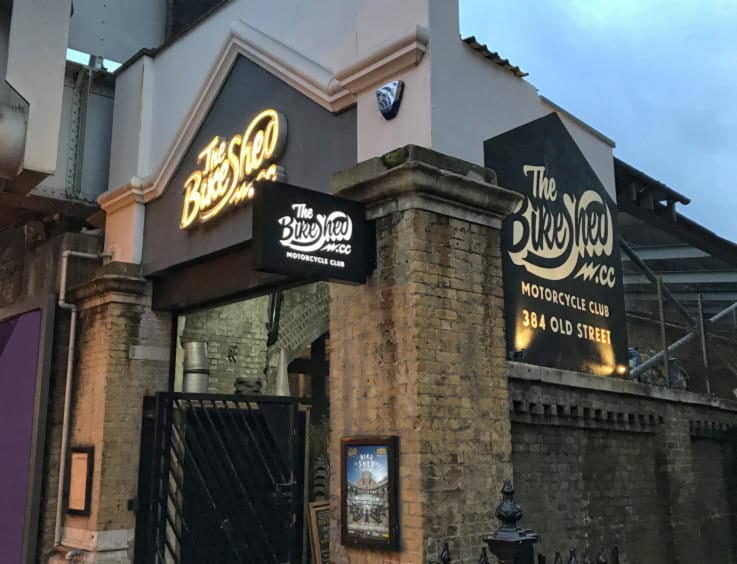
Are there any other plans for what you’ll do next?
We want to grow. At the moment we’re trying to raise money to open the club in Los Angeles because we need the American market. There are 350 million people there. California’s the sixth largest economy in the world. We want to access that market where 365 days a year it’s motorcycle weather and people just have more money and more people ride. If we can make this venture work in the UK, in London where the weather is bad, and people can’t afford a bike or the insurance, we are definitely going to make a success of it in LA. But it feels organic.
We’d like to open that the next year. Whether or not we do depends on the property and the licensing because it takes a long time in America to get an alcohol licence if the property doesn’t already have one. We’re looking at big industrial warehouses where they don’t. The other big dependency is fundraising. We’re in the middle of raising $5 million to do it. What I didn’t want is big institutional investors. I’m trying to do the same thing that we did here and have a lot of enthusiastic petrolheads and people who can afford to put a chunk of money in that they don’t need back for a while.
We’re not doing a three-year guaranteed ROI and there’s not a big structure for dividends and distribution of profits. What we want to do is put all the profit back into the business and grow it. I want people to wait to capitalise on their investment through liquidity events and taking their money out later as we grow. It’s difficult to find those kinds of investors, it takes a lot more effort. I also don’t want anybody to have more than 30 percent of the business.
It’s really slow and it’s a very difficult way to raise money. Some of the really big names they want the whole thing. You might find some Hollywood A-lister who rides a bike who says I’ll fund the whole thing but then wants their name above the door. We are also now looking at Hamburg because we think the market conditions there are perfect, and we like it. It’s more of a feasibility study that shows this would work over there.
The other thing that we’re doing is launching a festival event. Our show at Tobacco Dock is the best independent custom motorcycle show in the world, but it’s a static show. We did some experiments this year with riding events and track day events and scrambling events. So next year we’ll launch The Bike Shed festival. It will be our Goodwood for bikes. It’s something that’s a little bit overdue. We’re good at events, we’ve got a crowd that will come and it’s a relatively profitable business once you get going.
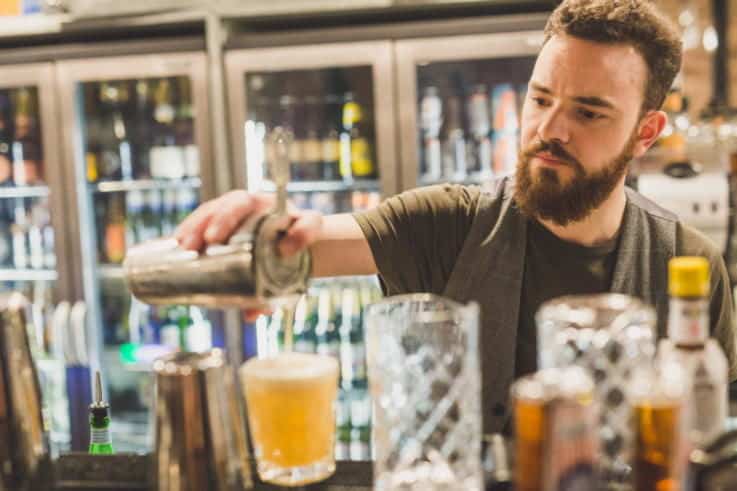
Is there anything else that you’d like to share?
I think one of the most important things in this business, and any good business, is it’s really important to try and not have it driven by characters at the top and have a team instead. The thing about the Bike Shed is it started as my venture and then it very quickly became my venture with my wife because she also gave up her career. Her background was Ministry of Sound and events and music, so she came in to run the events business. Also, a friend of mine Ross became our editor and Gareth became our retailer and now Stuart is our general manager and operations director. But they all have shares or share options and they’re all on the YouTube channel and they all ride the bikes and they go racing. We make sure that they’re all faces.
It’s all about succession planning and succession planning isn’t just having a new head chef lined up. It’s also about having people that represent the brand. It’s much better to have a team of people who might do things differently from you, but they won’t break the brand rules. It will still be good. I think that’s quite important, especially if you want to grow something, you need really really good people who are properly invested, literally invested, in the whole thing who can take it forward. Otherwise you spread yourself too thin up, you end up franchising, you end up letting other people run away with your brand that you don’t really have a relationship with.
The only way that we can go off and open in LA or Hamburg is to know that if we leave the base here in the capable hands of the guys who are running the various bits of business all they’ll do is make it continually good. You can’t espouse the idea of community if you haven’t got one. I think any business is a reflection of its top end structure, you feel it all the way down the food chain and customers feel that too. We very much have a family business feel and I think it makes a difference.
Images courtesy of The Bike Shed
How can storytelling help your retail business? We’ve got everything you need to know. To experience the very best of London’s retail for yourself, book one of our Insider Trends retail safaris. Find out how they can benefit your business here.

